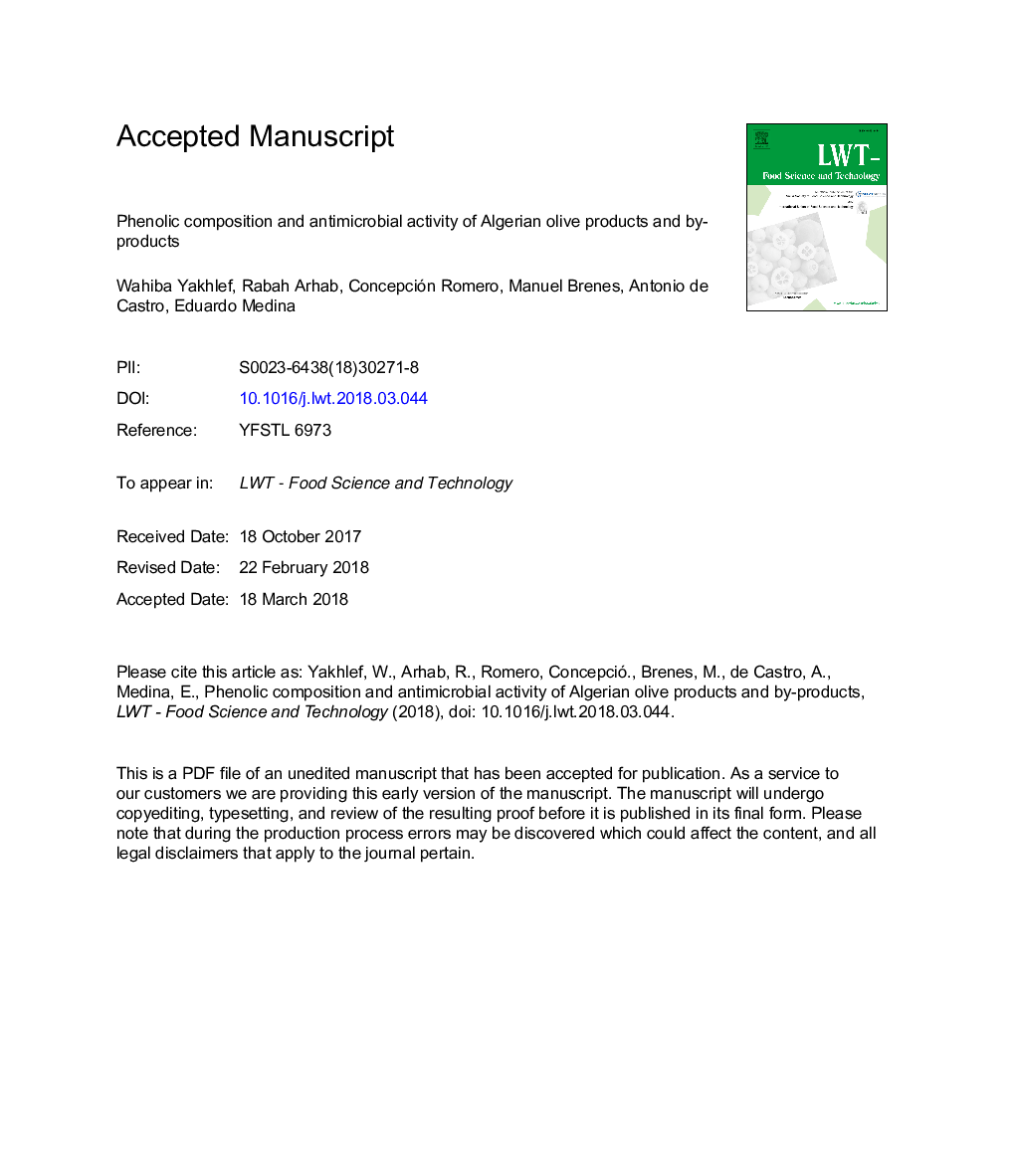| Article ID | Journal | Published Year | Pages | File Type |
|---|---|---|---|---|
| 8891011 | LWT - Food Science and Technology | 2018 | 31 Pages |
Abstract
This work characterized the phenolic profile of virgin olive oil, pomace, and olive mill wastewater (OMWW) of the three Algerian cultivars Blanquette, Rouguette and Sigoise, which were generated by traditional discontinuous press and 3-phase centrifugal extraction processes. Results revealed the cv. Blanquette as the cultivar with the highest phenolic content and no conclusive differences between the oil extraction processes were found. The antimicrobial activity exerted by OMWW and olive oils was attributed to their phenolic content, especially glutaraldehyde-like compounds. The most bactericidal OMWW, which presented the highest phenolic concentration (10,828â¯mg/L), showed a minimal bactericidal concentration (MBC) of 2.5% for all target microorganisms. In addition, a concentration of 452â¯mg/kg of total polyphenols in the olive oil reduced more than 3 log units from the initial inoculum in 30â¯min. Olive derived products showed a remarkable antimicrobial activity that makes them a good source of natural antimicrobials.
Related Topics
Life Sciences
Agricultural and Biological Sciences
Food Science
Authors
Wahiba Yakhlef, Rabah Arhab, Concepción Romero, Manuel Brenes, Antonio de Castro, Eduardo Medina,
